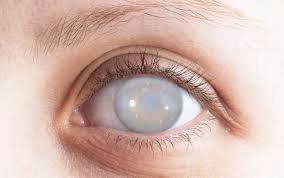
Causes and Signs of Cataracts – With Dr. Mohamed Sobhi
Published on: 2025-06-21 | Written by: Dr. Mohamed Sobhi, Consultant Ophthalmologist and Laser Surgeon
Cataracts are among the most common eye conditions, especially in the elderly. This condition occurs when the eye’s natural lens becomes cloudy, affecting vision clarity. Dr. Mohamed Sobhi, a specialist in advanced eye surgeries, explains that early diagnosis and appropriate treatment can prevent the disease from progressing and improve quality of life.
What Are Cataracts?
Cataracts occur when the eye’s natural transparent lens becomes cloudy, preventing light from passing clearly to the retina, leading to gradually impaired vision.
Causes of Cataracts
According to Dr. Mohamed Sobhi, several factors can increase the risk of developing cataracts:
| Cause | Explanation |
|---|---|
| Aging | The most common cause, as the lens naturally loses clarity with age |
| Diabetes | High blood sugar levels affect lens transparency |
| Prolonged sun exposure | Especially ultraviolet rays without proper protection |
| Smoking | Increases the risk of lens damage |
| Certain medications | Such as long-term corticosteroid use |
| Eye injuries | Accidents or previous eye surgeries |
Signs of Cataracts
Dr. Mohamed Sobhi points out that symptoms develop gradually, and the most common include:
-
Blurred or cloudy vision
-
Difficulty seeing at night
-
Faded or less vibrant colors
-
Frequent changes in eyeglass prescriptions
-
Halos around lights
-
Double vision in one eye
Diagnosis
Diagnosis relies on a slit-lamp examination, visual acuity tests, and lens evaluation. Dr. Mohamed Sobhi stresses the importance of regular eye checkups for early detection.
Treatment
In early stages, glasses may help improve vision. However, in advanced stages, the most effective treatment is cataract surgery, which involves removing the cloudy lens and replacing it with a clear artificial one using modern, precise techniques.
When to See an Eye Doctor
Dr. Mohamed Sobhi recommends seeing an eye specialist in the following cases:
-
Noticing any persistent or gradual vision changes
-
Difficulty performing daily tasks such as reading or driving
-
Having a family history of cataracts

